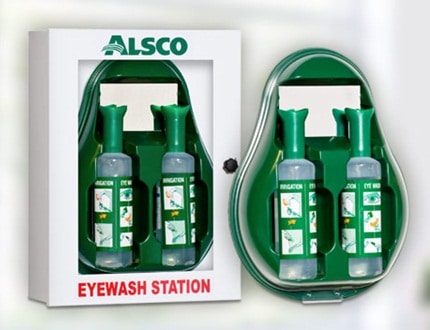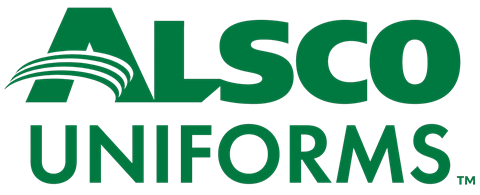Summary: Workers in the manufacturing industry are still at high risk of eye injury.
Eyewash stations are the ultimate convenient answer. They provide on-the-spot decontamination to flush away hazardous substances that can cause injuries to the eyes.
Even a strict compliance with safety procedures can’t guarantee total protection from accidental chemical exposures. Look beyond the use of goggles, face shields, and procedures for using personal protective equipment.
If you want the most reliable eyewash stations that are affordable and easy to install, contact Alsco now.
Why Do You Need Eyewash Stations?
Every year, more than 4000 eye injuries occur at work in New Zealand. A sizeable percentage of these statistics consisted of employees from the manufacturing industry. Many results in pain, impaired vision, time off work and some are blinded.
The eye contains delicate and sensitive parts. If it comes in contact with corrosive chemicals and irritant liquids, it may cause corneal scarring. This leads to visual loss and disfigurement. Radiation from welding flash and industrial laser beams can lead to visual impairment by causing burns to the retinal layer.
Common eye injuries include:
- Penetration of foreign objects like metal scraping into the eyes
- Scratches and abrasions on the eye’s surface (cornea) from foreign objects
- Burns caused by exposure to caustic chemicals
- Swelling caused by being struck in the eye by a fast moving object
The good news is, most of these eye injuries can be alleviated, if not totally prevented. The best first aid treatment is to immediately flush the eyes with flushing fluid within 10 to 15 seconds of exposure. Then, followed by the appropriate medical attention.
Safety goggles and personal protective equipment can’t always guarantee total protection from accidents. Eyewash stations are the ideal solution for your eye emergency needs in the workplace. They are an absolute necessity, even for schools, laboratories, and kitchens.
What Does the Law Say About Eyewash Stations?
Safety standards define eyewash stations as devices designed and intended to deliver flushing fluid insufficient volume, to irrigate and flush the eyes. Australia and New Zealand Standards require a facility of the appropriate type in each room where chemicals are used.
Eyewash safety units should be located on the same level within ten seconds of the hazard or work areas. In the presence of strong acids or bases, the eyewash station should be adjacent to the hazard.
Eyewash units should function in accordance with safety standards. For plumbed units, a continual source of potable water is required. Stand-alone eyewash stations should immediately be refilled or replaced after use. Employers should make sure that these devices are highly visible and well-marked.
Make sure to purchase an eyewash unit that has been approved by a third-party authority. Maintain it regularly to ensure that it will do its job during an emergency. Employees who are exposed to hazardous substances must be trained in the use of the equipment.
How to Choose the Right Equipment?
The need for emergency eyewash stations is based on the chemicals that workers use and the tasks that they do in the workplace. A job hazard analysis is important to identify potential risks and dangers of the job and the work areas.
General requirements for eyewash stations include:
- Ability to flush both eyes simultaneously.
- Freeze protection when the possibility of freezing temperatures exists.
- Nozzles protected from airborne contaminants.
- The unit shall deliver no less than 0.4 GPM tepid flushing for 15 minutes.
- Valves should have a ‘stay open’ feature.
The standard also recommends self-contained units to be constructed of materials that will not corrode in the presence of flushing fluid. As for maintenance, both plumbed and self-contained eyewash stations must undergo weekly inspection to verify proper operation.
Plumbed eyewash stations are not always possible or accessible due to location issues within the workplace. If space is an issue, you’ll need a portable model to support or substitute a plumbed equipment. Portable eyewash stations are great for first aid.
The key requirement, for portable models, is that instructions and the expiration date must be permanently marked on the containers. Inspection and maintenance should be performed according to the manufacturer’s instructions. Regular check-ups, replacements, and resupplies are essential.
How To Do Proper Flushing?
Approved flushing fluids include potable water, preserved buffered saline solution, or other medically acceptable solutions. Eyewash stations should expel only tepid water with temperatures ranging from 60°F to 100°F.
Flushing periods will depend on the kind of foreign object or chemical the eyes are subjected to. If the nature of the contaminant is not known, a flushing period of at least 20 minutes is required.
For other chemicals, flushing and rinsing time are as follows:
- Mildly irritating chemicals require 5-minute flushing
- Moderate to severe irritants require 20 minutes
- Non-penetrating corrosives need 20 minutes
- Penetrating corrosives require longer flushing time of 60 minutes
Non-penetrating corrosives include most acids. Their properties limit the extent of damage since they react with human tissue to form a protective layer. Penetrating corrosives threaten the vision because they enter the eyes deeply. Hydrofluoric acid, phenol, and most alkalis are penetrating corrosives.
If irritation continues, repeat the flushing procedure as first aid until proper medical attention is available. The eye injury and chemical contamination should be consulted with a physician.
Alsco Portable Eyewash Stations
Time is of the essence when it comes to saving someone’s eyesight. Choosing the best eyewash station for your workplace doesn’t have to be complicated. Alsco’s objective is to provide an eyewash model that is accessible easily and instantaneously.

Alsco’s eyewash stations are a practical alternative to fully-plumbed flushing equipment. These do not require plumbing, thus affordable and easy to install. Employers can set up more units throughout the work area. They are highly portable and allow their users to be mobile.
Each of our portable units provides simple, step-by-step visual instructions. The equipment is kept in a highly-durable, visible wall-mounted cabinets. Each station comes with two bottles of 500ml saline flushing solutions and features a no-mess flush system.
What Is Managed Rental Services?
The Alsco team is dedicated to assisting their clients in their WHS compliance requirements. That is why they offer a hassle-free Managed Rental Service when it comes to first aid. Rather than buying multiple eyewash stations, employers can simply pay a single annual fee.
With Alsco, there is an agreed maintenance schedule for your eyewash stations. Rest assured that supplies that are never out of date. Your first aid kits are appropriately stocked with the specific supplies you need for emergencies.
Portable eyewash stations are:
- Re-stocked regularly
- WHS Compliant
- Hospital-grade supplies
- Up-to-date Service Logs
- One small, simple, flat fee
It is best to be prepared with the proper safety equipment. Before purchasing and installing your eyewash stations, check what standards your state has set. Regulations may vary in local areas, but our friendly sales representative from Alsco can assist you.
Be first aid ready today! Get in touch with us now for a free quote.






